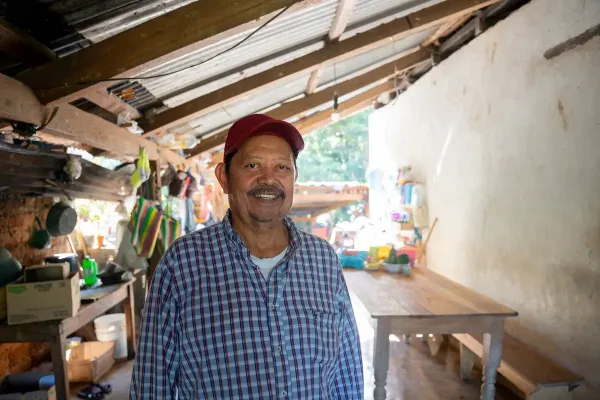Carlos Vázquez is originally from Pequeñez, Chiapas. At 67 years old, he continues to work on his farm, where he grows coffee, corn, and beans a few meters from his home. He has planted and harvested these foods with love and dedication throughout his life.
In 2000, when he was in his 40s, he began to experience a wave of unusual symptoms and didn’t know if his life as a farmer could continue.
“It started with a headache that I put up with at first, but then it became more constant…soon, more aches and pains came along,” he recalls. In the following weeks, he began to have frequent urination during the day and night, and he was drastically losing weight.
At that time, there were not many doctors near his home, so he traveled to a private practice a few hours away. There, he learned that his glucose level was 500 mg/dl, compared to the 99 mg/dl that would be healthy for a man his age. He received a diagnosis: diabetes.
The doctor prescribed medication, but it cost approximately $2,500 MXN ($145 USD) per month—unaffordable for Vázquez, who had a family of five to support. His earnings from his crops were not enough to consistently pay for his treatment, so he took his medications irregularly.
In 2005, his condition worsened. “I became very weak,” he recalls. “My family took me to the hospital. We didn’t know what was going to happen. We thought that I was nearing the end.”
Vázquez was hospitalized for 20 days and fortunately managed to recover, but this is not the case for many other people.
In Mexico, 1 in 6 adults live with diabetes. The country has the second highest prevalence of diabetes in Latin America, with 18.3% of the population suffering from the disease. It’s one of the leading causes of death, with 140,729 deaths recorded in 2021.
Care and treatment for chronic diseases like diabetes involves not only medication but also education about the disease and its effects, lifestyle changes, social support, and systems that facilitate recovery by allowing the patient to continue treatment properly.
After over a decade of barely managing his symptoms with costly, private doctors, Vázquez was introduced to Compañeros En Salud, as Partners In Health is known in Mexico, in 2014 when a first-year doctor began working in the community clinic in Salvador Urbina, near his home. He began attending the free consultations offered there, a much more affordable and accessible option to help control his diabetes. Since then, he has been receiving medication and follow-up treatment from the acompañantes program.
The acompañantes, or community health workers, are residents from the communities where Compañeros En Salud works, who receive training, supervision, and mentoring in chronic diseases, respiratory illnesses, and pregnancy care. The program, which has been running for 10 years and currently has 75 community health workers, has accompanied patients at every turn, from the home to the hospital. Acompañantes care for patients, counsel them, and help them follow their treatment plans, which can involve several medications.
Vázquez is one of those patients.
Every two weeks, he receives a visit from Irma Gálvez, one of Salvador Urbina’s acompañantes, who checks his glucose and blood pressure levels, encourages him to continue with his treatment, restocks his medications, and provides emotional support.
“I don’t know where I would be if Irma didn’t come to visit me. I probably would have already lost control [of my glucose level] again and died,” he says. “She comes when I feel bad. She advises me on my diet…I feel happy.”
Similar community health interventions have been shown to result in significant improvements in the health of chronically ill patients. Acompañantes have conducted more than 22,121 home visits to patients with diabetes since the program began. Currently, they support 1,620 patients with non-communicable diseases; 63% of patients supported by acompañantes were able to bring their diabetes under control, with blood sugar levels in normal ranges, and 72% of those with high blood pressure kept their levels under control.
That care has made a difference for patients like Vázquez, who now, thanks to the support of acompañantes, is able to resume his daily farm work.
“I know that I have a condition and that it is not going to go away,” he says. “But I have also been able to go on with my life. I am going to see my children and grandchildren. I am grateful that the acompañantes come to visit me, because they have really helped me get better.”


